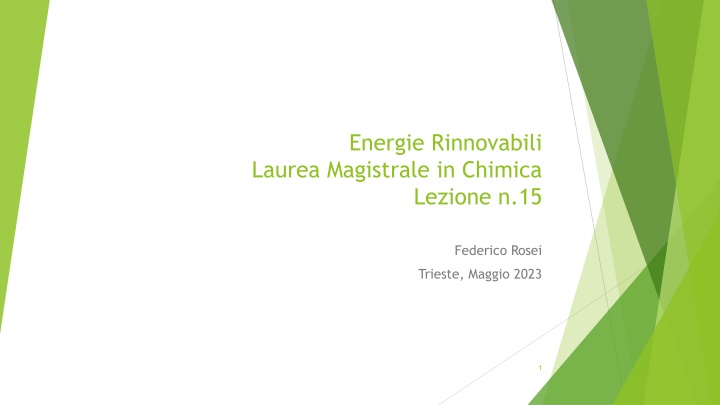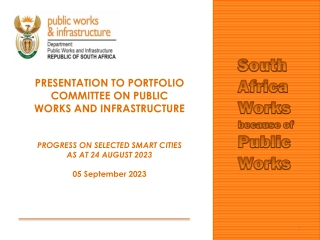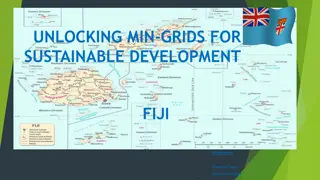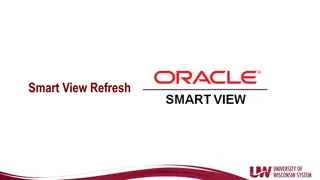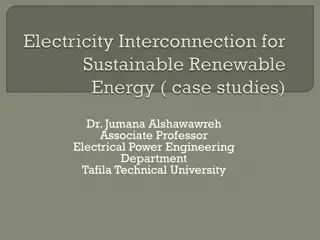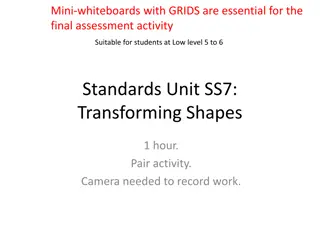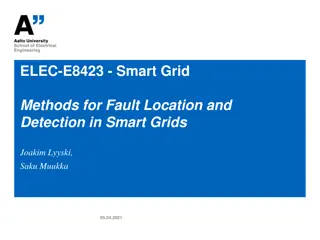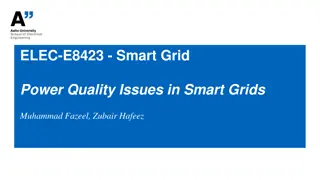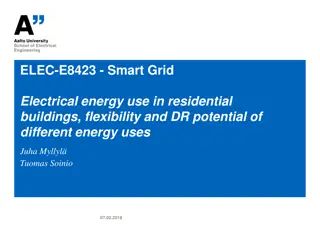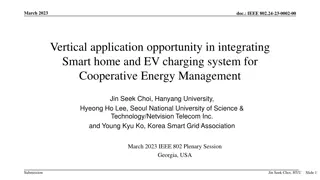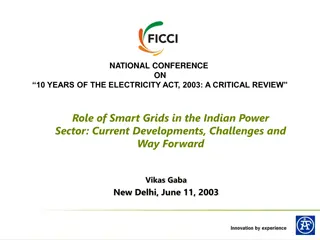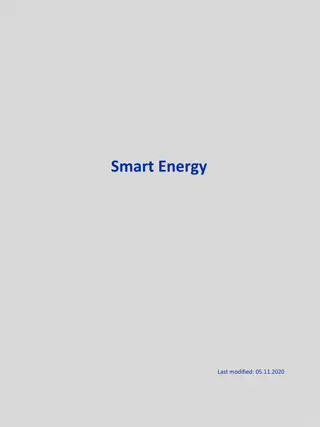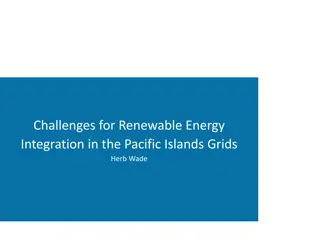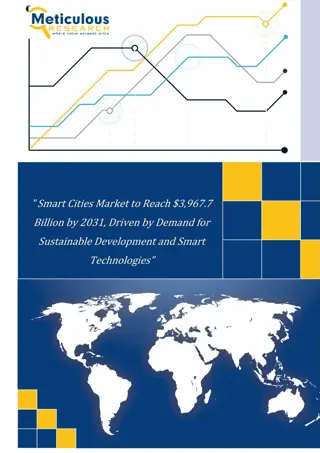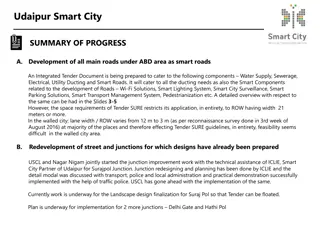Energy Transmission & Smart Grids Overview
World of renewable energy, electricity distribution, grid instability, and the role of distributed generation in enhancing the electrical grid system. Discover how countries like Germany lead in renewable energy adoption and the challenges faced in integrating renewable sources into the grid.
Download Presentation

Please find below an Image/Link to download the presentation.
The content on the website is provided AS IS for your information and personal use only. It may not be sold, licensed, or shared on other websites without obtaining consent from the author.If you encounter any issues during the download, it is possible that the publisher has removed the file from their server.
You are allowed to download the files provided on this website for personal or commercial use, subject to the condition that they are used lawfully. All files are the property of their respective owners.
The content on the website is provided AS IS for your information and personal use only. It may not be sold, licensed, or shared on other websites without obtaining consent from the author.
E N D
Presentation Transcript
Energie Rinnovabili Laurea Magistrale in Chimica Lezione n.15 Federico Rosei Trieste, Maggio 2023 1
n.15 Energy transmission The grid, grid instabilities, smart grids The promise of superconductors 3
Germany One of the world s renewable energy leaders & n.1 photovoltaic installer. On sunny days photovoltaic power can provide up to 35% of the country s (static) energy supply, sometimes up to 50% on weekends or holidays. 4
The Electrical Grid Distribution network that allows electricity suppliers to deliver energy from centralised power plants to subscribed consumers through transmission lines. 5
The Grid Grid distributes electricity across long distances. Drawbacks: significant losses; reliability. Solution: distributed generation. 6
Distributed generation Distributed generation: small-scale electric power generators that usually produce electricity at sites close to users. Energy efficient alternative to current electric grid. Can be used to generate a user s entire electricity supply, promote the use of green energy sources, for standby or emergency generation, etc. 7
Distributed generation Renewable power plants need to be built where sources are most abundant (rivers, shore, sea, deserts, etc.) These locations are not necessarily close to transmission lines new lines need to be constructed to integrate renewables into the current grid. Distributed generation allows to incorporate renewable energy without requiring long transmission lines Can be built wherever most convenient to specific users 8
Grid instability Electrical grids have been designed and built to manage continuous electrical power supply Renewable sources are intermittent can cause instabilities (aka Dunkelflautens) Need for smart grid dynamic management of power distribution 9
Smart grid A smart grid is an electricity network based on digital technology that is used to supply electricity to consumers via two-way digital communication. This system allows for monitoring, analysis, control and communication within the supply chain to help improve efficiency, reduce energy consumption and cost, and maximize the transparency and reliability of the energy supply chain. The smart grid was introduced with the aim of overcoming the weaknesses of conventional electrical grids by using smart net meters. 10
Superconductors Zero resistance below a critical temperature => no energy dissipation Usually critical T is low When high, the materials are ceramics => brittle 12
